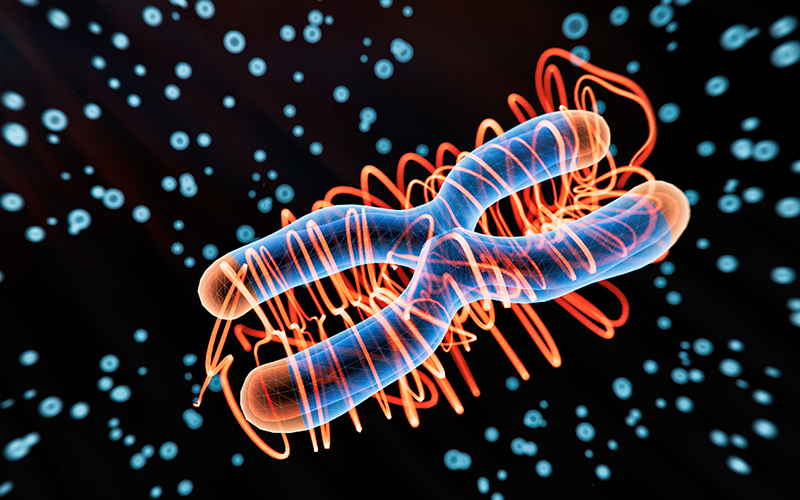This month: The X chromosome

OK, I know what this is – the sex chromosome.
Yes, the X chromosome is one of the two sex chromosomes in humans (the other is the Y chromosome). Typically, biologically female individuals have two X chromosomes, and those who are biologically male have one X and one Y.
Has this been in the news?
Yes – Stanford Medicine scientists looking at why autoimmune diseases disproportionately affect women have written that having two X chromosomes increases the risk.
Let’s rewind… more women have autoimmune diseases than men?
The authors of the study state that as many as four in five cases are women. Rheumatoid arthritis and scleroderma are examples of autoimmune disorders marked by lopsided female-to-male ratios. The ratio for lupus is 9 to 1; for Sjogren’s syndrome, it’s 19 to 1.
What’s going on?
They write that having two X chromosomes risks the production, in every female cell, of twice the amount of the myriad proteins specified by the X but not the Y chromosome. Such overproduction of so many proteins would be lethal.
That doesn’t sound good.
It isn’t, but nature has devised a clever workaround called X-chromosome inactivation. Early in embryogenesis, each cell in the nascent female makes an independent decision to shut down the activity of one or the other of its two X chromosomes. Once that decision is made, it’s handed down to these cells’ progeny in the developing foetus. That way, the same amount of each X chromosome-specified protein is produced in a female cell as in a male cell.
Go on.
As the researchers discovered, X-chromosome inactivation can lead to autoimmune disorders, but other factors can also cause these disorders, which is why men sometimes develop them.
Where can I read more?
Access the paper at bit.ly/3UrQ19K
Image credit | iStock
